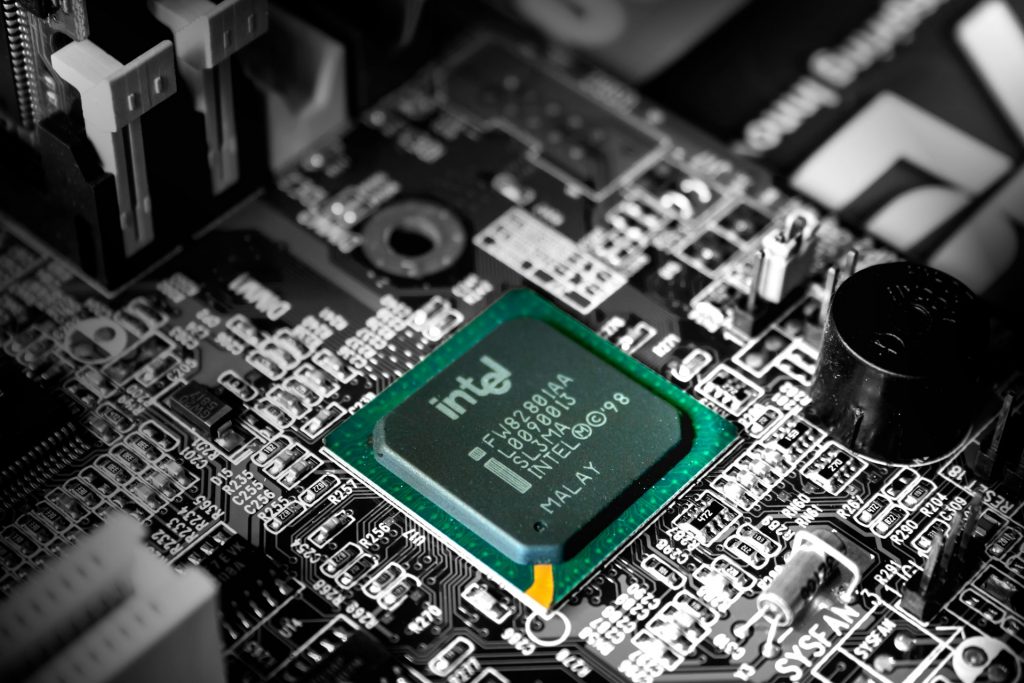ashish Sidhu
I write about the tips and tricks about graphic designing and web development.
Intel recently unveiled its 5th Gen Xeon Scalable processors, also known as Emerald Rapids, on December 14th, 2023. These processors, featuring up...

Image Credits: unsplash
Intel recently unveiled its 5th Gen Xeon Scalable processors, also known as Emerald Rapids, on December 14th, 2023. These processors, featuring up to 64 cores, bring a 40% performance boost over their predecessors. This is a significant stride in meeting the growing demands of AI and other high-performance applications, all while keeping operational costs in check—a crucial factor.
Emerald Rapids stands out by delivering a remarkable 42% improvement in AI inference performance and a solid 21% gain in general compute performance compared to the previous model, Sapphire Rapids. Importantly, it achieves a 36% increase in performance per watt across different workloads, a crucial feat in the current context where energy consumption by data centers is a significant concern.
What’s intriguing about Emerald Rapids is that Intel has made strides in enhancing its design methodologies without necessarily incorporating the latest process and packaging technologies. This step forward, though incremental, is impactful as it not only boosts performance but also contributes to cost reduction in manufacturing—a positive shift for Intel following a challenging period.
Looking at the broader picture, the progress in Intel’s foundry business, coupled with a focus on manufacturing execution, processor design enhancements, and workload optimizations, signals a promising growth trajectory for the company. Intel appears to be a dark horse in the AI computing race. Given these advancements, the stock holds promise and could be a worthwhile investment heading into 2024.
Intel’s recent launch of the 5th Generation Xeon Scalable processors, dubbed Emerald Rapids, marks a crucial turning point in high-performance computing. As a fresh addition to the scene, these processors are set to play a vital role in Intel’s efforts to reclaim its dominance in the CPU market.
Emerald Rapids follows the 4th Gen Sapphire Rapids series and is developed on the advanced ‘Intel 7’ process node. Notably, it boasts an impressive 64 cores, a significant leap from its predecessor. This boost in core count holds immense potential for elevating processing power, which is particularly beneficial for high-performance computing and AI technology.
A distinctive feature of Emerald Rapids is its enhanced core densities and a larger L3 cache. These additions translate into a tangible uptick in both performance and efficiency. As the world of technology progresses, Intel’s Emerald Rapids appears poised to make a significant impact in meeting the escalating demands for robust and energy-conscious computing solutions.
In the fast-evolving realm of AI tech, Intel 5th Gen faced intensified competition in the CPU market. However, the game-changing release of Emerald Rapids has catapulted Intel up the ranks, showcasing remarkable strides in performance, power efficiency, and security.
This processor zeroes in on three key aspects: performance, power, and security. Despite the inherent advantages of the process shrink (from 10nm to 7nm), Intel consistently delivers improvements in these crucial domains. To supercharge performance, Emerald Rapids adopts a two-tile, 32-core architecture. This move reduces the reliance on applications and VMs to tap into resources on other dies. The UltraPath Interconnect (UPI) speed boost and the support for 5.6 GHz DDR5 memory further amplify data movement and processing speed, setting the stage for a significant performance upgrade.
Recommended:
Legal Knowledge and Services at Your Fingertips with Genie AI.
Worldr helps you Keep your Business Communications Tool Secure.